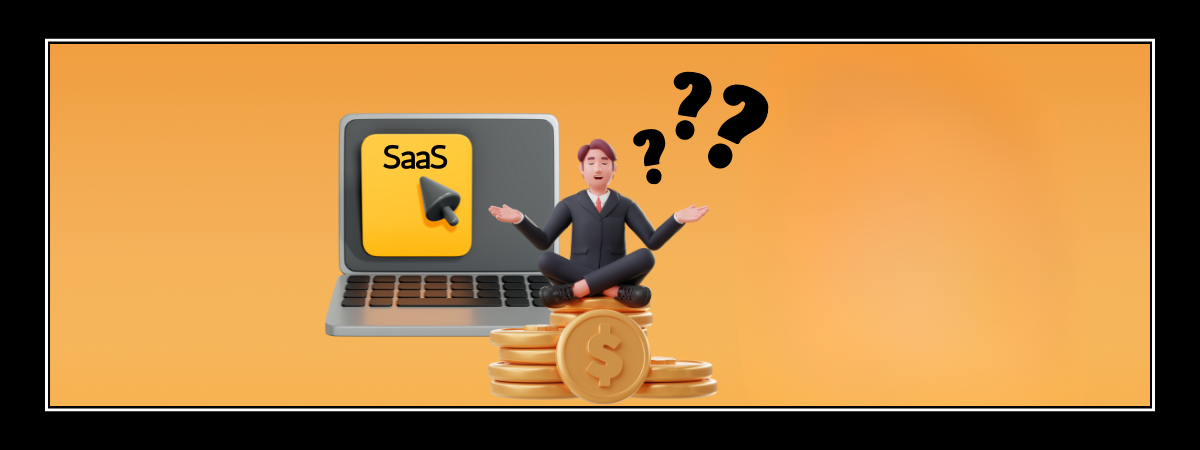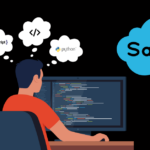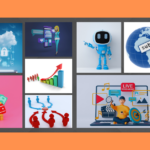Before we dive into how to price your SaaS product, first, let’s talk about revenue. According to Vena Solutions, median growth rates varied in 2023. SaaS companies saw anywhere from 22% to 51% growth. The large amount of variance comes from multiple factors: public vs. private, evaluations, and B2B vs B2C SaaS.
Enter you and your product. The indie developer. The solopreneur. The person leading a small team of ride or dies. What does this info from a year ago mean for 2024 and beyond? We’re glad you asked (even if you didn’t).
The answer is that your pricing structure will largely affect your revenue and growth. Your strategy will impact customer acquisition, retention, and overall business scalability. But with various models to choose from and trends continually shifting, how do you decide the best approach for your SaaS offering?
Let’s dive into how to price your SaaS product. We’ll compare monthly versus annual billing options, analyze when and why you should use different models, and highlight best practices.
Table of Contents
Want to Know How to Price Your SaaS Product? First, Understand Your Market
The process of figuring out how to price your SaaS product begins with understanding your market.
Conduct thorough analyses of your target audience. What are their problems? Their needs? And how much they will pay to solve these issues.
It’s hard. We know. You need customers now.
Additionally, a competitive analysis is essential to positioning your product appropriately. Know what your competitors charge and the value they provide. It’ll help define a competitive, yet profitable, strategy.
Sure, you can copy your competition, but why? You’re bringing something different to the table, right? Something fresh? Something better?
Trying to undercut isn’t always a good idea. But, introductory offers may get some early feet in your door. But trying to charge too much when there are similar products may come back to bite you. This article exists because it’s a difficult topic.
Let’s get into everything you need to look at and why it matters.
SaaS Pricing Models

SaaS pricing models vary. What do you need? What does the customer need? Why?
Understanding the right pricing model is a big step in the direction of market success. Each model has unique advantages and challenges. These pros and cons will impact everything from user acquisition to revenue stability.
Subscription-Based Model
This approach leverages regular payments for continued access to your software. The biggest benefit is that it offers a steady revenue stream. Some of the SaaS pricing models on this list will technically fall under this category.
Pros: It facilitates financial planning with predictable income. On top of that, it allows pricing flexibility based on different access levels or feature sets.
Cons: Ensuring continuous value to justify recurring costs is essential to prevent churn.
Freemium Model
The freemium model serves as an entry point. Users can access the basic functionalities of your SaaS product at no cost. But, they have the option to buy premium features.
It creates a low-risk environment for users to test your product. More users means higher adoption rates. In theory…
It builds a broad user base, but transitioning from free to paid remains its biggest challenge. A successful freemium product requires a compelling USP for its premium features.
Pros: This model is excellent for quickly building a user base. The free offering lowers the entry barrier.
Cons: Converting free users into paying customers can be a challenge. You’ll need strong and strategic upselling efforts.
Flat-Rate Model
With a flat-rate model, every customer pays a fixed price for full access to your software. It’s super straightforward and easy.
Pros: Its simplicity appeals to customers who prefer clear, uncomplicated pricing.
Cons: The downside is its lack of flexibility, which may not suit businesses of all sizes or customers with varying needs.
Per-User Pricing
The number of individual users accessing the software determines this model’s pricing. It’s perfect for products that can scale with a growing company. The idea here is to get more and more “teams” to use your product while kicking them a “discount” to bring on more people.
Pros: It aligns the cost with the scale of the user’s operation, growing as they do.
Cons: The main drawback is that it can become prohibitively expensive for large teams. If your goal is to attract large companies or keep companies you helped grow, deterring them from adopting your solution is not ideal. This is typically where you see something like “Enterprise package: Contact us for pricing”.
Tiered Pricing
This is the most widely known version falling under the subscription model umbrella.
Tiered pricing caters to various customers by offering multiple pricing tiers with different features and access levels.
Pros: This model provides the flexibility to address the needs of diverse market segments. Everyone from SMBs to large enterprises can find what they need.
Cons: Creating too many options can confuse potential customers, complicating decision-making.
Usage-Based Model
Adopting a pay-for-what-you-use model appeals to users because it is fair. Users only pay for the amount of service or resources they consume. While the subscription model is still the most common, the usage-based model has gained quite a bit in popularity.
Pros: This can be particularly attractive for businesses with fluctuating needs.
Cons: The variability in usage makes revenue prediction harder, complicating budgeting and financial planning.
SaaS Pricing Models – These Guys Are Doing It Right
- Slack: Effective use of freemium to build a massive user base
- Salesforce: Tiered subscriptions catering to different corporate needs
- AWS: Flexible, usage-based services
Different companies with different pricing strategies. Yet all of them are incredibly successful. Pricing is as much an art as it is a science.
Tailoring your approach to your specific product and market can make all the difference in achieving SaaS success.
Software as a Service Pricing Strategies

Don’t just make up random numbers. Software as a Service pricing strategies should be well-thought-out.
The pricing models discussed above are just the foundation.
To ensure long-term success, consider other critical elements that can impact your pricing. Here are some best practices and trends to keep in mind:
- Offer clear value propositions – Communicating your product’s value convinces potential customers to choose you over competitors.
- Keep an eye on the market – Track your competitors’ pricing strategies. You can identify gaps, unique offerings, and potential opportunities for differentiation.
- Use data to inform pricing decisions. Data analytics can track usage patterns and customer behavior. You’ll know what features are being used most and that can help you decide on a pricing strategy.
- Consider segmenting your customers – Tailor pricing plans for different customer segments. Cater to specific needs. Maximize revenue.
- Embrace flexibility – Be ready to adjust your pricing strategy to stay competitive and meet changing market demands.
Study the models. Understanding why they exist, how they’re best used, and what works for you will be key to sustainable growth and success.
So, take the time to evaluate your options, test different approaches, and find the right pricing strategy for your SaaS product.
SaaS Pricing Best Practices
Beyond choosing a pricing model, there are other SaaS pricing best practices to consider when developing your pricing strategy. These include:
- Value-based pricing – Pricing your product based on its value to customers rather than its cost can be more effective.
- Tiered offerings – Providing different levels of service and features at various price points. It can attract a broader range of customers.
- Free trials and demos – Offering potential customers the chance to try your product for free or providing demos can increase conversion rates.
- Transparency and simplicity – Be transparent about pricing and keep it simple to build customer trust.
- Regularly reviewing and updating pricing – As your business grows and evolves, review and adjust your pricing to stay competitive and maximize revenue.
- Offering discounts and promotions – Providing limited-time discounts can attract new customers and incentivize current ones to upgrade their plans.
Using these best practices ensures your pricing strategy will continue to align with your business goals as they change and adapt.
How to Price Your SaaS Product With Annual vs. Monthly Billing
Besides choosing a pricing model and implementing best practices, another factor to consider is whether to offer annual or monthly billing options.
Each has its own pros and cons.
Annual Billing
Pros:
- Predictable revenue stream for the year
- Encourages long-term commitment from customers
- Can offer discounts for annual subscriptions
- Consistent cash flow for the business
Cons:
- Upfront costs may deter potential customers (Don’t act like you’ve never said, “You are not hitting my account for that much at one time” when considering a subscription-based purchase)
- Less flexibility in pricing adjustments throughout the year
Monthly Billing
Pros:
- Lower upfront costs can attract more customers
- More flexibility in pricing adjustments
- Can offer additional features or services at an added cost
Cons:
- Less predictable revenue stream
- Higher churn rate as customers can easily cancel their subscription
Ultimately, the decision between annual and monthly billing will depend on your business goals, target market, and pricing strategy.
Pro-tip: Most companies offer both with a nifty little slide. Prospects can easily go back and forth to get a clear idea of the value they’ll receive for the money they pay. We highly recommend adding this feature to your front-end pricing page.
Free Trial or Not for SaaS Products?

One common question about pricing is whether you should offer a free trial or not for SaaS products. This is a relevant question, as some companies find that option unviable.
While offering a free trial can attract potential customers and increase conversion rates, it also has its drawbacks.
Pros of Offering a Free Trial
- Customers can try the product with no commitment
- Increases brand awareness and attracts new customers
- Showcases the unique value of your product compared to competitors
Cons of Offering a Free Trial
- It can attract “tire-kickers” or users who are not serious about purchasing, leading to higher churn rates and lower revenue
- It can be expensive and time-consuming to set up for SaaS companies with complex products or multiple pricing plans
Ultimately, whether or not to offer a free trial will depend on your specific product, market, and target audience.
Now You Have a Better Idea of How to Price Your SaaS Product in 2024
We think we covered pretty much everything. Now, you should have a clear idea of how to price your SaaS product.
Navigating the intricacies of Software as a Service pricing strategies is a nuanced process. It demands careful consideration and adaptability. The choice of SaaS pricing model plays a critical role in a product’s market positioning and financial success.
Incorporating SaaS pricing best practices will enhance customer trust and satisfaction. You’ll get higher retention rates and sustainable growth.
Decisions around billing cycles and the provision of a free trial or not for SaaS products will further refine a company’s approach. It’s a balancing act between customer acquisition/retention with revenue predictability and cash flow management.
The most effective SaaS pricing strategy is one that:
- Aligns with the business’s overarching goals
- Reflects the value delivered to customers
- And, remains flexible enough to evolve with market demands
By diligently applying these insights, SaaS companies can position themselves for long-term success in a competitive digital landscape.
Now, it’s time to market your product. Need some help? It might be time to look into hiring a fractional chief marketing officer.




